
Kyiv Reservoir: Ukraine's Vast Aquatic Gem
Discover the tranquility and natural beauty of Kyiv Reservoir, a vast man-made lake north of Ukraine's capital, perfect for boating, fishing, and exploring nearby cultural treasures.
The Kyiv Reservoir, also known as the Kyiv Sea, is a breathtaking expanse of water located north of Kyiv, Ukraine's capital. This man-made reservoir was created in 1966 by damming the Dnieper River, and it now covers an area of 922 square kilometers. Its serene waters and picturesque surroundings make it a perfect getaway for nature lovers and water enthusiasts alike. Visitors to the Kyiv Reservoir can enjoy a variety of activities, including boating, fishing, and swimming. The reservoir's calm waters are ideal for sailing, and several marinas offer boat rentals and guided tours. Anglers will find an abundance of fish species, including pike, perch, and carp, making it a popular spot for fishing competitions and leisurely fishing trips. The area around the Kyiv Reservoir is also rich in natural beauty and cultural heritage. There are several parks and nature reserves nearby, where visitors can hike, picnic, and observe local wildlife. Additionally, the historic town of Vyshhorod lies on the western shore of the reservoir, offering a glimpse into Ukraine's past with its ancient churches, museums, and archaeological sites.
Local tips in Kyiv Reservoir
- Visit during the summer months for the best weather and water activities.
- Consider renting a boat for a day to explore the reservoir's vast expanse.
- Pack a picnic and enjoy a meal at one of the scenic spots around the reservoir.
- Bring binoculars for birdwatching; the area is home to many species of birds.
- Check out the local markets in Vyshhorod for unique souvenirs and local delicacies.
Kyiv Reservoir: Ukraine's Vast Aquatic Gem
The Kyiv Reservoir, also known as the Kyiv Sea, is a breathtaking expanse of water located north of Kyiv, Ukraine's capital. This man-made reservoir was created in 1966 by damming the Dnieper River, and it now covers an area of 922 square kilometers. Its serene waters and picturesque surroundings make it a perfect getaway for nature lovers and water enthusiasts alike. Visitors to the Kyiv Reservoir can enjoy a variety of activities, including boating, fishing, and swimming. The reservoir's calm waters are ideal for sailing, and several marinas offer boat rentals and guided tours. Anglers will find an abundance of fish species, including pike, perch, and carp, making it a popular spot for fishing competitions and leisurely fishing trips. The area around the Kyiv Reservoir is also rich in natural beauty and cultural heritage. There are several parks and nature reserves nearby, where visitors can hike, picnic, and observe local wildlife. Additionally, the historic town of Vyshhorod lies on the western shore of the reservoir, offering a glimpse into Ukraine's past with its ancient churches, museums, and archaeological sites.
When is the best time to go to Kyiv Reservoir?
Iconic landmarks you can’t miss
Kiev Zoo
Explore the enchanting Kiev Zoo, a premier destination in Kyiv, featuring diverse wildlife and engaging educational programs for all ages.

Golden Gate
Explore the Golden Gate of Kyiv, a magnificent historical landmark reflecting Ukraine's rich heritage and vibrant culture, surrounded by lush beauty.
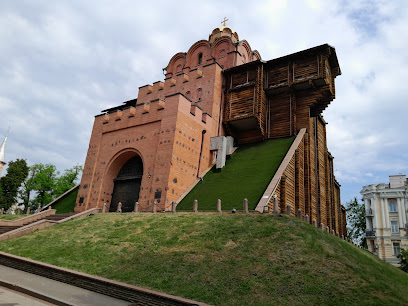
Arka Svobody Ukrayinsʹkoho Narodu
Discover the Arka Svobody in Kyiv, a stunning arch symbolizing freedom and resilience, offering breathtaking views and a rich cultural experience.

Kiev Pechersk Lavra
Explore the timeless beauty and spiritual depth of Kiev Pechersk Lavra, a UNESCO World Heritage site that captivates with its rich history and stunning architecture.

National Museum of the History of Ukraine in the Second World War
Explore the National Museum of the History of Ukraine in the Second World War, a profound tribute to resilience and remembrance in Kyiv.

Ukrainian Motherland Monument
Explore the iconic Ukrainian Motherland Monument, a stunning symbol of resilience and pride in Kyiv, offering breathtaking views and rich historical insights.

Mezhyhirya Park
Discover the natural beauty and rich history of Mezhyhirya Park, a stunning national park in Kyiv Oblast, perfect for nature lovers and history enthusiasts alike.

Mezhyhirya Residence
Explore the opulent Mezhyhirya Residence, a museum showcasing Ukraine's history and the legacy of its former leaders amidst stunning gardens.

St. Michael's Golden-Domed Monastery
Explore the architectural beauty and rich history of St. Michael's Golden-Domed Monastery, a must-see spiritual landmark in Kyiv.
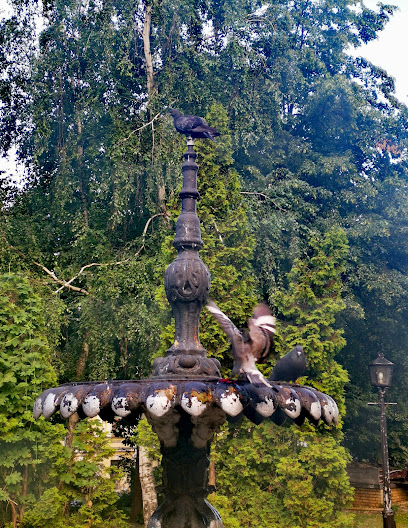
St. Andrew's Church
Discover the architectural beauty and rich history of St. Andrew's Church, a stunning Eastern Orthodox landmark perched in the heart of Kyiv.
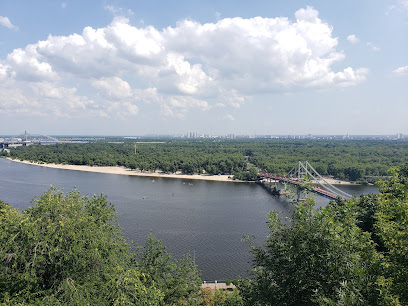
Park Bridge
Discover the stunning Park Bridge in Kyiv, where breathtaking views of the Dnipro River and vibrant city life await every visitor.

National Opera of Ukraine
Discover the cultural heartbeat of Ukraine at the National Opera of Ukraine, where every performance tells a story of artistry and tradition.

National Kyiv-Pechersk Historical and Cultural Reserve
Explore the National Kyiv-Pechersk Historical and Cultural Reserve, a UNESCO World Heritage Site, showcasing Ukraine's rich history and culture.

Syretskyi Park
Explore Syretskyi Park in Kyiv - a lush green sanctuary perfect for relaxation, recreation, and enjoying nature's beauty.

National Museum of Folk Architecture and Life of Ukraine
Discover Ukraine's rich cultural heritage at the National Museum of Folk Architecture and Life, an open-air museum showcasing traditional architecture and folk life.

Unmissable attractions to see
Kiev Pechersk Lavra
Discover the historical and spiritual essence of Kyiv at the breathtaking Kiev Pechersk Lavra, a UNESCO World Heritage site and treasure of Ukraine.

Park Landscape Alley
Explore the serene Park Landscape Alley in Kyiv, where nature meets art in a vibrant and inviting atmosphere perfect for all ages.

Park Natalka
Experience the natural beauty and serenity of Park Natalka, a must-visit urban oasis on the banks of the Dnieper River in Kyiv.

XII Misyatsiv
Discover the captivating wildlife and lush landscapes of XII Misyatsiv, a unique zoo experience in Kyiv Oblast, perfect for families and nature lovers.

St. Andrew's Church
Explore the stunning St. Andrew's Church in Kyiv, an architectural masterpiece and a symbol of Ukraine's rich Eastern Orthodox heritage.
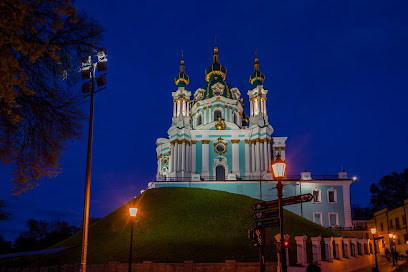
National Kyiv-Pechersk Historical and Cultural Reserve
Discover the historical treasures of Ukraine at the National Kyiv-Pechersk Historical and Cultural Reserve, a UNESCO World Heritage site filled with culture and beauty.

St. Sophia's Cathedral
Explore the architectural marvel of St. Sophia's Cathedral, a UNESCO Heritage site brimming with history and stunning mosaics in the heart of Kyiv.
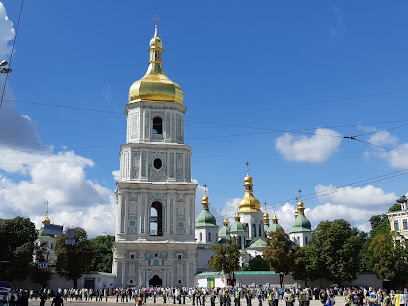
Museum of Water
Explore the Museum of Water in Kyiv, a unique destination showcasing the wonders of water through engaging exhibits and captivating stories.

Kiev in miniature
Explore Mini Kiev, an enchanting open-air museum showcasing intricate miniature replicas of Kyiv's most iconic landmarks and rich cultural heritage.

A stone seagull monument
Discover the serene beauty of the Stone Seagull Monument in Vyshhorod, a captivating tribute to nature with breathtaking river views.

Mezhyhirya Galleon Pier
Experience the tranquility and natural beauty of Mezhyhirya Galleon Pier in Kyiv Oblast, a perfect escape for nature lovers and tranquility seekers.

Lyutizh Bridgehead
Discover the historical significance and natural beauty of Lyutizh Bridgehead, a captivating museum and tourist attraction in Kyiv Oblast.

Dniprovsʹko-Teterivsʹkyy Zapovidnyk
Discover the natural beauty and wildlife of Dniprovs'ko-Teterivs'kyy Zapovidnyk, a stunning nature reserve in Kyiv Oblast, Ukraine.

Хутір Савки
Explore the serene beauty and rich cultural heritage of Хутір Савки, a captivating heritage museum in Kyiv Oblast, perfect for a day of discovery.

Vyshhorod Pottery Museum
Explore the rich heritage and artistry of Ukrainian ceramics at the Vyshhorod Pottery Museum, a gem in the heart of Vyshhorod.

Essential places to dine
Ostannya Barykada
Discover Ostannya Barykada: A delightful blend of traditional Ukrainian flavors in a modern setting at the heart of Kyiv.

Chachapuri Restaurant
Experience authentic Georgian cuisine at Chachapuri Restaurant in Kyiv – home of delicious chachapuri and more!

Favorite Uncle
Experience exquisite Mediterranean cuisine and vibrant cocktails at Favorite Uncle - Kyiv's premier restaurant and bar destination.

Pervak
Discover the heart of Ukrainian cuisine at Pervak in Kyiv - where tradition meets taste in a vibrant dining experience.

KANAPA restaurant
Discover authentic Ukrainian flavors at KANAPA Restaurant in Kyiv—where tradition meets modern dining.

Korchma Taras Bulba
Discover authentic Ukrainian cuisine at Korchma Taras Bulba, where every dish celebrates tradition in a cozy atmosphere.

Hutorets na Dnipri
Discover authentic Ukrainian flavors at Hutorets na Dnipri while enjoying stunning river views in Kyiv's culinary gem.
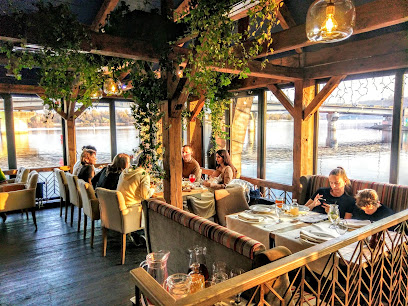
100 rokiv tomu vpered
Discover authentic Ukrainian cuisine at 100 Rokiv Tomu Vpered - where tradition meets modern dining in Kyiv.

Veranda Na Dnipri
Experience exquisite Ukrainian and European cuisine at Veranda Na Dnipri while enjoying breathtaking views along the Dnipro River.

Forrest Club
Discover the rich flavors of meat cuisine at Forrest Club in Kyiv—an ideal spot for families and special celebrations.

River Grill
Experience exquisite Ukrainian cuisine with stunning riverside views at River Grill in Kyiv.

V Rebro
Experience the best of American cuisine at V Rebro in Kyiv – where succulent carvery meets a vibrant pub atmosphere.

PetruS-ь
Discover authentic Ukrainian cuisine at PetruS-ь in Kyiv, where tradition meets modern dining in a vibrant atmosphere.

Prynada Ukrainian Cafe
Discover the vibrant flavors of Ukraine at Prynada Cafe in Kyiv - where authentic cuisine meets lively entertainment.

El Gaucho
Experience authentic Argentinian flavors at El Gaucho in Kyiv - where every meal is a celebration of taste and culture.

Markets, malls and hidden boutiques
Ocean Plaza
Experience the best of shopping, dining, and entertainment at Ocean Plaza, Kyiv's premier shopping destination for tourists and locals alike.
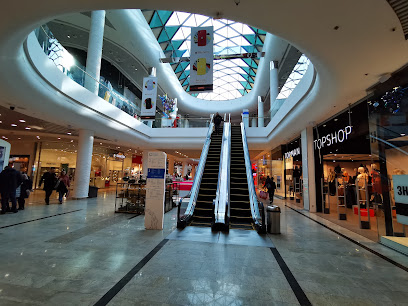
ТРЦ Gulliver
Discover the ultimate shopping experience at Gulliver Shopping Mall in Kyiv, featuring top brands, diverse dining, and exciting entertainment options.

Globus Mall
Discover Globus Mall in Kyiv, where shopping meets entertainment amidst a vibrant urban atmosphere.

Ukraina Shopping Mall
Discover shopping bliss at Ukraina Shopping Mall in Kyiv, where fashion meets culture and every corner offers unique treasures.

TSUM
Discover TSUM in Kyiv, where luxury shopping meets local charm, offering an unforgettable retail experience for all visitors.

River Mall
Explore River Mall in Kyiv: A premier shopping destination with diverse stores, delightful dining, and breathtaking river views.

Mandarin Plaza
Discover the ultimate shopping experience in Kyiv at Mandarin Plaza, featuring top brands, diverse dining, and vibrant entertainment options.

Patryot
Discover the vibrant world of gardening at Patryot, a premier garden center in Kyiv Oblast, filled with lush plants and expert gardening advice.

Sanahunt
Explore contemporary fashion at Sanahunt, a stylish clothing store in Kyiv, blending local artistry with global trends for the ultimate shopping experience.

Santekhmarket
Explore Santekhmarket in Dymer for a wide range of quality bathroom supplies, expert advice, and a pleasant shopping experience.

oLawander
Discover the beauty of nature at oLawander Ecological Park, a perfect blend of tranquility, coffee, and stunning photography opportunities in Dymer.

Dobryi Stil
Explore Dobryi Stil in Dymer for a taste of local Ukrainian culture and a variety of delicious grocery options.

Вероніка міні маркет
Discover Вероніка міні маркет: Your go-to home goods store in Voropaiv, offering quality products with a local touch.
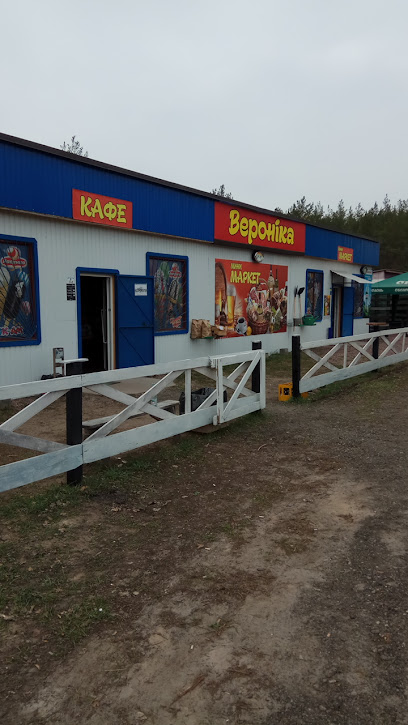
Minimarket
Explore the local flavors and everyday essentials at Kozarovychi Minimarket, your gateway to authentic Ukrainian culture in Kyiv Oblast.

Buddvir
Explore the charm of Buddvir in Lyutizh, where local craftsmanship meets delightful shopping in a warm and welcoming atmosphere.

Essential bars & hidden hideouts
Docker Pub
Experience the vibrant atmosphere of Docker Pub in Kyiv, where local flavors and lively entertainment meet in the heart of the city.

Lysa Hora
Experience the vibrant nightlife of Kyiv at Lysa Hora, a cocktail bar offering expertly crafted drinks and stunning views.

Pink Freud Kyiv
Experience the vibrant cocktail culture at Pink Freud, Kyiv's top bar known for its creative drinks and lively atmosphere.

AMIGOS BAR
Discover AMIGOS BAR in Kyiv - a lively bar offering a unique mix of local culture, delicious drinks, and a vibrant social atmosphere perfect for tourists.
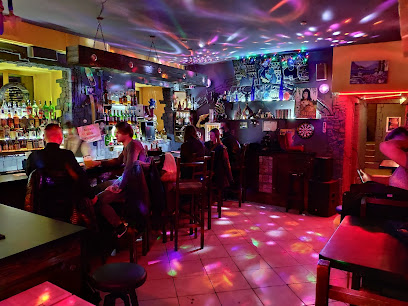
Old Bar
Experience the vibrant nightlife at Old Bar, a hidden gem in Kyiv offering an impressive selection of beers and a welcoming atmosphere.

Loggerhead
Discover Loggerhead in Kyiv: A cocktail bar with a hidden entrance and an innovative drink menu that promises a vibrant nightlife experience.

Wood You Like Bar
Experience the vibrant nightlife of Kyiv at Wood You Like Bar, where creative cocktails meet a cozy atmosphere in the heart of the city.
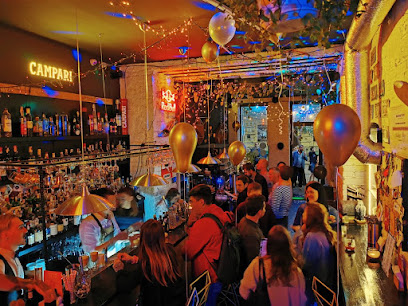
Bar/13
Discover the vibrant nightlife at Bar/13, a cozy bar in Kyiv's Shevchenkivs'kyi district offering a wide range of drinks and a friendly atmosphere.
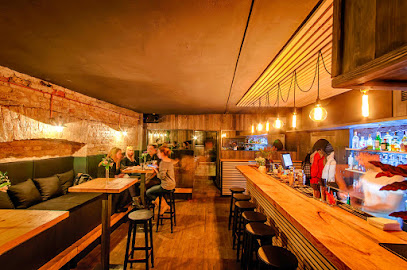
РУДИЙ ОЛЕНЬ FUN PUB
Experience the vibrant atmosphere of РУДИЙ ОЛЕНЬ FUN PUB in Kyiv, where delicious food and drinks meet lively entertainment for an unforgettable night out.

b-hush rooftop lounge bar
Discover the elegance of b-hush Rooftop Lounge Bar in Kyiv, where stunning views, exquisite cocktails, and a chic atmosphere await.

Port Wine Bar Kyiv
Experience the finest wines and delicious tapas at Port Wine Bar Kyiv, an inviting spot for wine lovers in the heart of the city.

#ParusBar
Discover Parus Bar in Vyshhorod, a vibrant spot for drinks, live music, and a great atmosphere perfect for unwinding after exploring Kyiv Oblast.

DUDKA BAR
Experience the vibrant nightlife of Vyshhorod at Dudka Bar, where delicious drinks and a lively atmosphere await every visitor.

Dumbo Cafe Bar
Discover the charm of Dumbo Cafe Bar in Kyiv Oblast, where cozy ambiance meets exceptional service for a delightful escape.
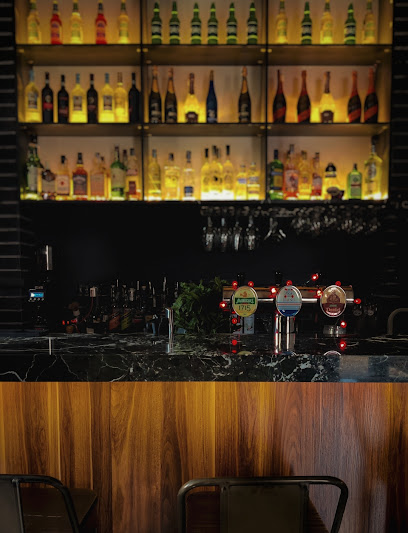
Club house MFC Crazy Hohols
Discover the vibrant nightlife of Kyiv at Club House MFC Crazy Hohols, where great drinks and lively atmosphere await.
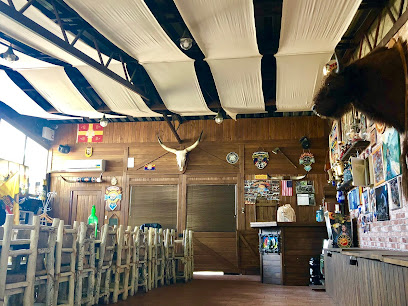
Local Phrases about Kyiv Reservoir
-
- HelloПривіт
[pryvit] - GoodbyeДо побачення
[do pobachennya] - YesТак
[tak] - NoНі
[ni] - Please/You're welcomeБудь ласка
[budʹ laska] - Thank youДякую
[dyakuyu] - Excuse me/SorryВибачте
[vybachte] - How are you?Як справи?
[yak spravy?] - Fine. And you?Добре. А ви?
[dobre. A vy?] - Do you speak English?Ви говорите англійською?
[vy hovoryte anhliysʹkoyu?] - I don't understandЯ не розумію
[ya ne rozumiyu]
- HelloПривіт
-
- I'd like to see the menu, pleaseЯ б хотів подивитися меню, будь ласка
[ya b hotiv podyvytysya meny, budʹ laska] - I don't eat meatЯ не їм м'ясо
[ya ne yim m'yaso] - Cheers!Будьмо
[budʹmo] - I would like to pay, pleaseЯ б хотів розрахуватися, будь ласка
[ya b hotiv rozrakhuvatysya, budʹ laska]
- I'd like to see the menu, pleaseЯ б хотів подивитися меню, будь ласка
-
- Help!Допоможіть!
[dopomozhitʹ!] - Go away!Піди геть!
[pidy hetʹ!] - Call the Police!Викличте поліцію!
[vyklychte politsiyu!] - Call a doctor!Викличте лікаря!
[vyklychte likarya!] - I'm lostЯ загубився
[ya zahubyvsya] - I'm illЯ хворий
[ya khvoryy]
- Help!Допоможіть!
-
- I'd like to buy...Я б хотів купити...
[ya b hotiv kupity...] - I'm just lookingЯ просто дивлюсь
[ya prosto dyvlyusʹ] - How much is it?Скільки це коштує?
[skilʹky tse koshtuye?] - That's too expensiveЦе занадто дорого
[tse zanadto doroho] - Can you lower the price?Чи можете ви знизити ціну?
[chy mozhete vy znyzyty tsinu?]
- I'd like to buy...Я б хотів купити...
-
- What time is it?Котра година?
[kotra hodyna?] - It's one o'clockОдна година
[odna hodyna] - Half past (10)Пів на (10)
[piv na (10)] - MorningРанок
[ranok] - AfternoonДень
[denʹ] - EveningВечір
[vechir] - YesterdayВчора
[vchora] - TodayСьогодні
[sohodni] - TomorrowЗавтра
[zavtra] - 1Один
[odyn] - 2Два
[dva] - 3Три
[try] - 4Чотири
[chotyry] - 5П'ять
[p'yatʹ] - 6Шість
[shistʹ] - 7Сім
[sim] - 8Вісім
[visim] - 9Дев'ять
[dev'yatʹ] - 10Десять
[desyatʹ]
- What time is it?Котра година?
-
- Where's a/the...?Де є/знаходиться...?
[de ye/znakhodytsya...?] - What's the address?Яка адреса?
[yaka adresa?] - Can you show me (on the map)?Чи можете ви показати мені (на мапі)?
[chy mozhete vy pokazaty meni (na mapi)?] - When's the next (bus)?Коли наступний (автобус)?
[koly nastupnyy (avtobus)?] - A ticket (to ....)Квиток (до ...)
[kvitok (do ...)]
- Where's a/the...?Де є/знаходиться...?
History of Kyiv Reservoir
-
Kyiv Reservoir, also known as the Kyiv Sea, was created in 1960 following the construction of the Kyiv Hydroelectric Power Plant and Dam on the Dnieper River. The reservoir spans approximately 922 square kilometers and plays a crucial role in hydroelectric power generation, irrigation, and flood control in the region.
-
The creation of the Kyiv Reservoir led to the displacement of several villages and thousands of residents. The Ukrainian government relocated these communities, and the reservoir's formation submerged numerous homes, historical sites, and fertile farmlands. Despite the economic benefits brought by the reservoir, the social impact on these communities was significant.
-
The establishment of the reservoir drastically altered the local ecosystem. The reservoir's formation changed the natural flow of the Dnieper River, affecting fish populations and other aquatic life. Efforts have been made to manage these ecological changes, including fish stocking programs and environmental monitoring.
-
Though the Kyiv Reservoir was constructed after World War II, the area around the Dnieper River saw significant military activity during the war. The Battle of Kyiv in 1941 and the subsequent liberation of the city in 1943 were pivotal moments in the Eastern Front. The strategic importance of the Dnieper River made it a focal point for both Nazi and Soviet forces.
-
Over the years, Kyiv Reservoir has become a popular destination for recreational activities. The reservoir's expansive waters are ideal for boating, fishing, and watersports. Numerous resorts, beaches, and recreational facilities have been developed along its shores, making it a favored spot for both locals and tourists.
-
The Kyiv Reservoir region holds cultural importance for Ukraine. It is home to various historical sites and monuments, some of which were relocated or rebuilt following the reservoir's creation. The region's folklore, traditions, and festivals reflect the deep connection between the local population and the Dnieper River.
-
In recent years, Kyiv Reservoir has faced several challenges, including pollution, water level management, and the impact of climate change. Environmental groups and government agencies are working together to address these issues, ensuring the reservoir's sustainability and continued importance to the region's economy and ecology.
Kyiv Reservoir Essentials
-
Kyiv Reservoir, also known as the Kyiv Sea, is located north of Kyiv, Ukraine's capital. The nearest international airport is Boryspil International Airport (KBP), situated approximately 40 kilometers southeast of Kyiv. From the airport, you can take a taxi, bus, or train to reach Kyiv. Public transportation options from Kyiv to the reservoir include buses, marshrutkas (minibuses), and trains that operate from various parts of the city. Alternatively, renting a car can provide greater flexibility for exploring the area.
-
Once you are in Kyiv, multiple transportation options are available to reach the Kyiv Reservoir. Public buses and marshrutkas frequently travel to the towns and villages surrounding the reservoir. For a more scenic and leisurely journey, consider taking a train from Kyiv's central railway station to one of the lakeside towns. Taxis and rideshare services like Uber and Bolt are also readily available. Renting a bicycle can be a fun way to explore the reservoir's immediate surroundings.
-
The official currency in Ukraine is the Ukrainian Hryvnia (UAH). Credit and debit cards are widely accepted in Kyiv and its surrounding areas, including restaurants, hotels, and shops near the Kyiv Reservoir. ATMs are available in urban areas, but it is advisable to carry some cash, especially if you plan to visit smaller villages or rural areas where card payments may not be accepted.
-
Kyiv and its surrounding areas, including the Kyiv Reservoir, are generally safe for tourists. However, it is essential to exercise standard precautions. Avoid walking alone at night in unfamiliar or poorly lit areas, and keep an eye on your belongings in crowded places. Some areas around Kyiv may have higher crime rates targeting tourists, so staying vigilant is advisable. Always use reputable taxi services and avoid displaying valuable items openly.
-
In case of emergency, dial 112, the unified emergency number in Ukraine, for immediate assistance. The emergency services can connect you to police, medical help, or fire services. It is highly recommended to have travel insurance that covers medical emergencies. Pharmacies are available in most towns and villages around the reservoir for minor health issues. Ensure you have a list of local emergency contacts and the address of the nearest hospital.
-
Fashion: Do dress modestly, especially when visiting religious sites or rural areas. Avoid overly flashy or revealing clothing. Religion: Do respect local customs and traditions. When visiting churches or religious sites, cover your head and dress conservatively. Public Transport: Do be respectful and offer your seat to elderly passengers. Don't eat or drink on public transport. Greetings: Do greet people with a firm handshake and maintain eye contact. Eating & Drinking: Do try local dishes and beverages. Don’t refuse hospitality, as it is considered impolite.
-
To experience Kyiv Reservoir like a local, visit the local markets and small eateries where you can sample traditional Ukrainian cuisine. Renting a boat or kayak to explore the reservoir's waters can provide a unique perspective. Engage with locals to learn about the area's history and folklore. Don't miss the chance to visit historical sites and natural reserves around the reservoir, such as the Mezhyhirya Residence and Vyshhorod Historical and Cultural Reserve.
Trending Landmarks in Kyiv Reservoir
-
Kiev Zoo
-
Golden Gate
-
Arka Svobody Ukrayinsʹkoho Narodu
-
Kiev Pechersk Lavra
-
National Museum of the History of Ukraine in the Second World War
-
Ukrainian Motherland Monument
-
Mezhyhirya Park
-
Mezhyhirya Residence
-
St. Michael's Golden-Domed Monastery
-
St. Andrew's Church
-
Park Bridge
-
National Opera of Ukraine
-
National Kyiv-Pechersk Historical and Cultural Reserve
-
Syretskyi Park
-
National Museum of Folk Architecture and Life of Ukraine
Nearby Cities to Kyiv Reservoir
-
Things To Do in Chernihiv
-
Things To Do in Cherkasy
-
Things To Do in Vinnytsia
-
Things To Do in Kremenchuk
-
Things To Do in Kropyvnytskyi
-
Things To Do in Sumy
-
Things To Do in Khmelnytskyi
-
Things To Do in Poltava
-
Things To Do in Lutsk
-
Things To Do in Ternopil
-
Things To Do in Kryvyi Rih
-
Things To Do in Orhei
-
Things To Do in Kharkiv
-
Things To Do in Chernivtsi
-
Things To Do in Chișinău







